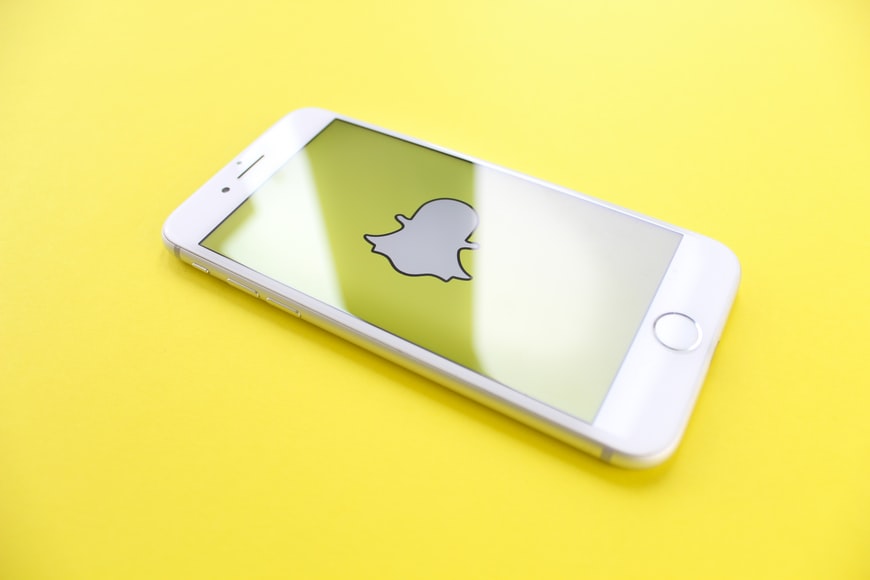What can Augmented Reality be Used for in Business?
Is your business ready for upcoming innovations like Augmented Reality?
Businesses can use AR to create immersive customer experiences, elevate marketing and advertising, create user-friendly product demos, increase sales conversions, and minimize product returns.
Augmented reality (AR) helps businesses redefine how customers see and interact with their products, giving them new and exciting ways to engage and increase revenue.
What is Augmented Reality (AR)?
AR is an enhanced version of the real world around us. This is achieved through multiple digital elements, such as visual elements, sound, or other sensory stimuli, created by technology. It is a growing trend among companies involved in mobile computing and business applications in particular.
Most Popular Examples of AR
AR may seem like a foreign concept, but the following examples will remind you that AR is more common (and easy to grasp) than you might think. Just take a look at these AR platforms, which you’ve likely already used or heard of:
Snapchat
It’s a new millennium, and messaging continues to break reality barriers yearly. Gone are the days of “Hw r u?” text messages charged per letter. Platforms like Snapchat allow users to send instant messages that can disappear after being seen.
But wait, it gets better. Filters and features allow users to change or enhance not only what they look like but what they sound like.
From bunny ears and alien eyes, to a sneak peek of what you’ll look like at 80, the possibilities are endless with this type of practical AR.
Instagram filters
Copying Snapchat — there, we said it, but we’re not the only ones — Instagram now also uses AR to bring Instagram stories to life.
For those unfamiliar with the platform, Stories (similar to Snapchat, do you see a trend?) are 15-seconds or shorter posts on Instagram that stay on the platform for only 24 hours (unless saved under the highlight section of a user’s profile).
From freckles and runway-worthy makeup to vampire eyes and haircuts and colors, we are yet to find an end to the possibilities of Instagram story filters.
Pókemon Go
Not speaking as the ultimate Pókemon Go fan (JK, I’m a level 50 trainer so no one better mess with me), this smartphone game is the perfect example of how AR can be used to make reality even better.
Using GPS and augmented reality, users become Pókemon trainers in their own towns or cities. Real streets are transformed into hiding places for Pókemon characters, with even evil force Team Rocket making an appearance.
Photoshop
In essence, AR refers to an enhanced version of our realities, meaning that this principle is also found in editing software such as Photoshop.
Whether removing a pimple, inserting a sunset, or creating an other-worldly reality where children become characters in the Harry Potter universe, the possibilities truly are endless.
Interior Decorating Apps
We’ve all been there (or is it only me that window shops for furniture?): standing in a store or scrolling online, wondering if the velvet green chair will look good in your living room.
AR apps like Roomy take the guessing game out of design, allowing users to virtually beautify their spaces, and explore interior design trends. And to answer your question, yes, the green velvet looks amazing, especially with the matching pillow.
How does AR work?
Without even realizing it, we use AR almost every day, but how does it work? First off, augmented reality uses a camera-equipped device, such as your phone, tablet, or even smart glasses.
These devices are loaded with AR software, which really smart people must be designing because I can’t even draw a stick figure.
Next, these devices recognize objects through computer vision technology. You know, like when you open Snapchat, and it recognizes your face to turn it into a cat? A video stream is then recognized by this advanced technology and changed into the relevant enhanced reality.
This is pretty advanced stuff, and we can only imagine how much Dr. Emmett Brown from Back to the Future would’ve enjoyed this The Jetsons-like feature.
How is Augmented Reality Used in Business?
Technology companies and businesses of all sizes are coming up with new ways to integrate AR into the business and customer experience. From marketing and advertising to employee education and everything in-between: gone are the days of a 2D reality. AR is shaking things up for the better.
AR in Marketing and Advertising
Taking the marketing and advertising to a whole new playing field, AR makes a consumer’s interaction with a product far more memorable than the old full-page poster on page five of the daily newspaper.
Just take a look at this ingenious AR ad by Vaseline. By scanning a limited-edition Vaseline tin, consumers are transported to 150 years of Vaseline’s product history. A paper, radio or TV ad can only do so much. This AR version of advertising showcased how consumers go from simply a viewer to an immersed part of product marketing.
Another hot (pardon the pun) example of AR use in ads is this ingenious one by Burger King Brazil. Users are encouraged to scan competitor fast food outlets’ ads, virtually set them on fire, and receive a free Whopper. Talk about a whoppin’ good time.
AR in Event Planning
From virtual tours and gamified experiences to showcasing your products in action, augmented reality is seriously shaking up the way we think about events. Just take a look at this recruitment event, where boring brochures come to life through the power of AR.
During COVID-19 lockdown periods, the events industry also saw an increase in AR virtual events, where participants could virtually join an event by simply scanning a barcode or clicking on a link.
AR in Retail
As you surely know, online commerce is taking the retail world by storm, and paving the way for AR to take its rightful place on the retail throne.
AR now allows shoppers to simply try products on. For shoppers who prefer to go out in the real world, enables consumers to see more information about a product like this, where a shopper can use their smartphone to scan a product (or multiple products at a time) and to see the all of its ingredients. You can even filter the products, to see it according to the one with the most calories (or vice versa) or your preference.
AR is bridging the gap between products and consumers, allowing shoppers the opportunity to imagine themselves using the product. Pair this with all the other marketing opportunities AR provides, sales are sure to soar.
AR in Real Estate and Architecture
I say real estate, you say open house. “Real estate!” *cricket noises*. If the pandemic has taught us anything it is that we don’t really need to leave the comfort of our own homes to do something.
Shopping for a home or real estate space should be no different. AR allows people to take virtual tours of homes and spaces by simply using their phones. Just take a look at this feature, which allows prospective homeowners to imagine a space as their own by decorating it.
AR proves that the days of guessing games before making a purchase are long gone. Users can clearly imagine a product as their own, improving the chances of a sale being made.
AR in the Design Industry
As with retail and architecture, designers can immerse themselves into a creative space using only the power of AR. And no, we’re not just talking about interior designers: artists and designers from all walks of life can bring their art to life through the power of AR.
From virtual tours and AR-infused art galleries, to using AR as their sole art medium: we imagine that artists are floating on an AR-infused cloud. Just take at this art gallery in Singapore, where victors and art lovers can scan the physical art on the walls with their phones, and enjoy an extension of the art virtually.
AR in the Food Industry
From allowing clients to virtually take a walkthrough of a restaurant’s menu, to educating shoppers on a product’s ingredients, nothing tastes quite as good as AR’s presence in the food industry.
AR can also be used to give clients a sneak peek of the behind-the-scenes of their food preparation or can provide gamified chef training. What else can we say about food and AR but bon appétit!
AR in Employee Education and Training
Take the zzz’s out of education and training by creating an emerging AR experience that staff members and employees love.
Learning new skills all on your own is also more fun than ever. Just look at how Skyview Light, which teaches you all about stars by allowing you to scan the sky with your phone and seeing the names of constellations in real-time.
Then there’s medical wonder Medivis: from using mixed reality to superimpose 3D views of MRI images and CT scans, to assisting specialists and surgeons before and during surgery, this tech is taking medicine to a whole new level.
AR is taking over the world in a multitude of positive ways, and it’s not leaving opportunities for better education behind.
Why is AR business strategy more important than ever before?
Running a business and leaving AR out of the equation is like being at an all-you-can-eat sushi buffet and only eating one dish: not smart.
AR proves over again that it is a marketing and product awareness force to be reckoned with. It is bridging the gap between user and product, allowing clients to clearly imagine what it would be like to own a product.
Make AR a part of your business strategy and watch as sales soar.
Conclusion
Unless you’re a 14-year-old Tik Tok sensation, AR may seem intimidating, because it is. But there is no need to fear, because we’ve compiled everything that you need to know about making AR a workable force in your business.


